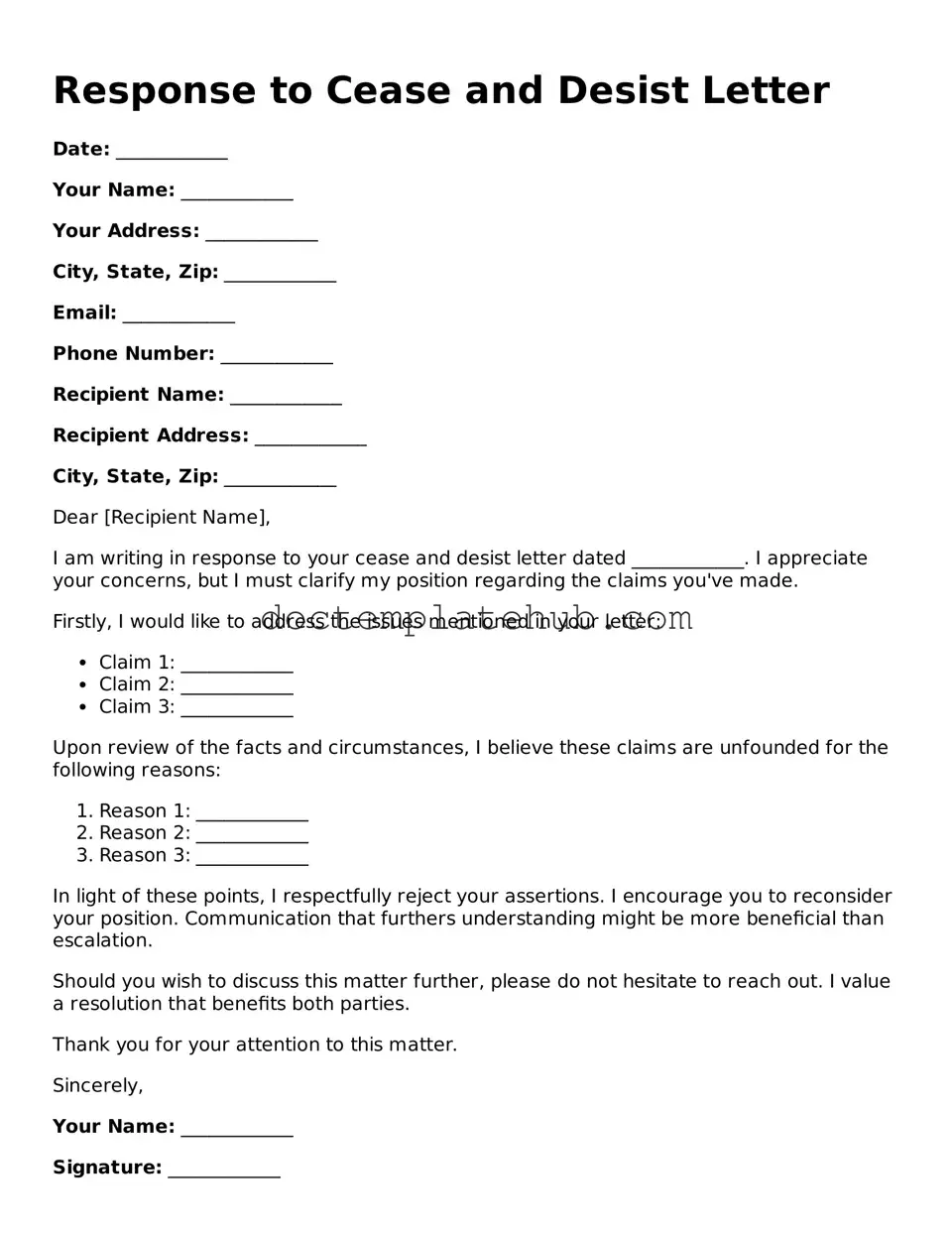What is a cease and desist letter?
A cease and desist letter is a formal request from one party to another, asking them to stop engaging in a specific activity. This letter often serves as a warning that the sender believes their rights are being violated. It can pertain to issues like copyright infringement, trademark violations, or harassment. The goal is to resolve the matter without resorting to legal action.
Why would I need to respond to a cease and desist letter?
Responding to a cease and desist letter is important because it allows you to address the claims made against you. Ignoring the letter can lead to further legal action, which might include lawsuits. A well-crafted response can clarify your position, demonstrate your willingness to resolve the issue, and potentially prevent escalation.
What should I include in my response?
Your response should include several key elements. First, acknowledge receipt of the letter. Then, clearly state your position regarding the claims made. If you believe the claims are unfounded, provide evidence or reasoning to support your stance. It’s also wise to express a willingness to discuss the matter further, as this can show good faith and a desire to resolve the issue amicably.
Can I ignore a cease and desist letter?
While you technically can ignore a cease and desist letter, doing so is generally not advisable. Ignoring it may lead the sender to escalate the matter, potentially resulting in legal action against you. It’s better to respond, even if you plan to contest the claims. This shows that you are taking the situation seriously.
What happens if I don’t agree with the claims made in the letter?
If you disagree with the claims, your response should clearly articulate your reasons. You may provide evidence or a legal basis for your disagreement. This can be an opportunity to negotiate or clarify misunderstandings. Engaging in dialogue can sometimes lead to a resolution that satisfies both parties without further conflict.
Should I consult a lawyer before responding?
Consulting a lawyer before responding to a cease and desist letter is often a wise decision. An attorney can help you understand your rights and obligations, assess the validity of the claims, and craft a response that protects your interests. Legal advice can be invaluable in navigating potential pitfalls and ensuring your response is appropriate.
What are the potential consequences of not responding?
Failing to respond to a cease and desist letter can have several consequences. The sender may choose to take legal action, which could result in a lawsuit. You might also lose the opportunity to negotiate or resolve the issue amicably. Additionally, ignoring the letter can damage your reputation and potentially lead to financial penalties if the matter escalates.
